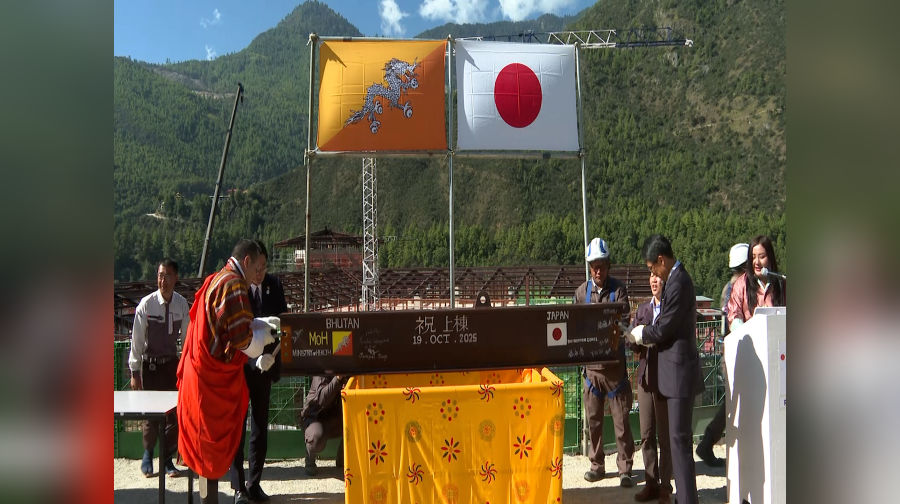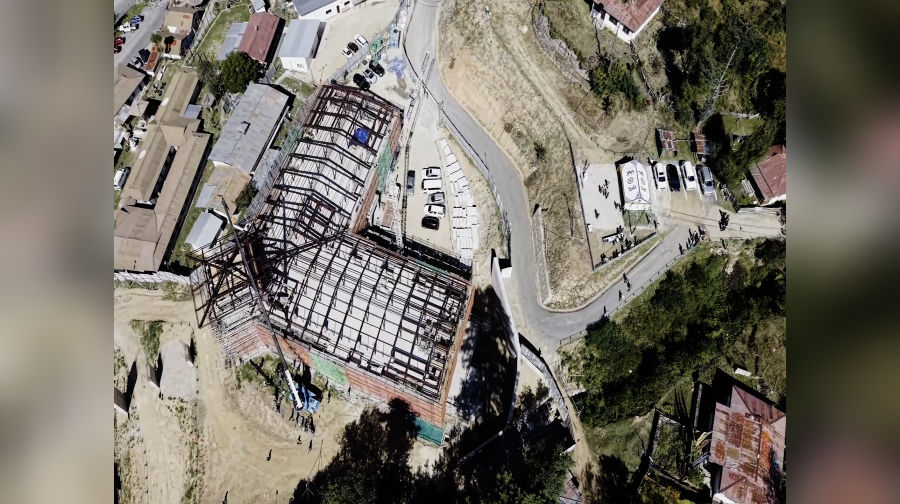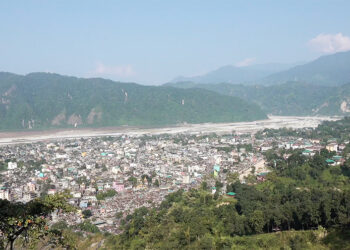 A topping-out ceremony at the construction of the Royal Centre for Infectious Diseases (RCID) was held in Gidakom in Thimphu today. It is a ritual that marks when the last beam is placed at the top of a building’s structure. It is a traditional Japanese ceremony performed to celebrate and pray for the safety of the workers and good fortune.
A topping-out ceremony at the construction of the Royal Centre for Infectious Diseases (RCID) was held in Gidakom in Thimphu today. It is a ritual that marks when the last beam is placed at the top of a building’s structure. It is a traditional Japanese ceremony performed to celebrate and pray for the safety of the workers and good fortune.
The soft chirping of birds blended with the calm morning welcomed the event, a purification ceremony.
Then, officials started signing the metal beam. It bore the names of everyone, including workers who have been part of the construction since August last year. It represents the unified effort of everyone involved.
The beam is then prepared for installation.
It is then placed at the top of the structure, marking the completion of the building’s main structure.
“We believe in god. That is why, after the completion of the concrete and steel structure of a building, we pray to god. This is for the swift finishing stages later. It is also for the safety of the workers and that no accidents occur at the worksite,” said Takeharu Kakeya, the Project Manager of Dai Nippon Construction.
 The construction is expected to be complete by June next year, coinciding with the 40th anniversary of diplomatic ties between the two nations. The Japanese government, through JICA, is pumping in approximately Nu 2.2bn for the project. This is the largest grant aid project in the history of JICA’s development cooperation in Bhutan.
The construction is expected to be complete by June next year, coinciding with the 40th anniversary of diplomatic ties between the two nations. The Japanese government, through JICA, is pumping in approximately Nu 2.2bn for the project. This is the largest grant aid project in the history of JICA’s development cooperation in Bhutan.
The Royal Centre for Infectious Diseases will be equipped to treat, prevent, control, and manage infectious diseases like COVID-19.
Ambassador of Japan to Bhutan Keiichi Ono said, “This is an important project for both countries. We experienced the COVID-19 pandemic several years ago, and we have learnt a lot from the experiences. Together, we have decided to have this project and prepare for the next pandemic, which would come at a certain stage in future.”
Health Minister Tandin Wangchuk said, “We never know when a pandemic will hit. However, we know that it is inevitable. As part of the Japanese government’s support, this centre is being built. Once completed, it will also serve as a training facility for health professionals across the country with advanced equipment.”
It is designed to house 80 beds under normal circumstances, and the capacity can be increased to 100 beds in the event of an emergency. It is expected to play a leading role in protecting the health of the Bhutanese people.
“I expect this centre to contribute three functions. One is the strengthening of medical education in partnership with the KGUMSB. The second one is strengthening the treatment of infectious diseases like TB. The third one is if a second pandemic like COVID-19 happens, this kind of centre will contribute to dealing with many patients,” said Kimata Yoichiro, the Chief Representative of JICA Bhutan Office.
Today, 56 per cent of the construction is complete, slightly ahead of schedule.
The centre stands as a symbol of Bhutan and Japan’s shared commitment to safeguarding lives and building a healthier future.
Kelzang Chhophyel
Edited by Tandin Phuntsho









